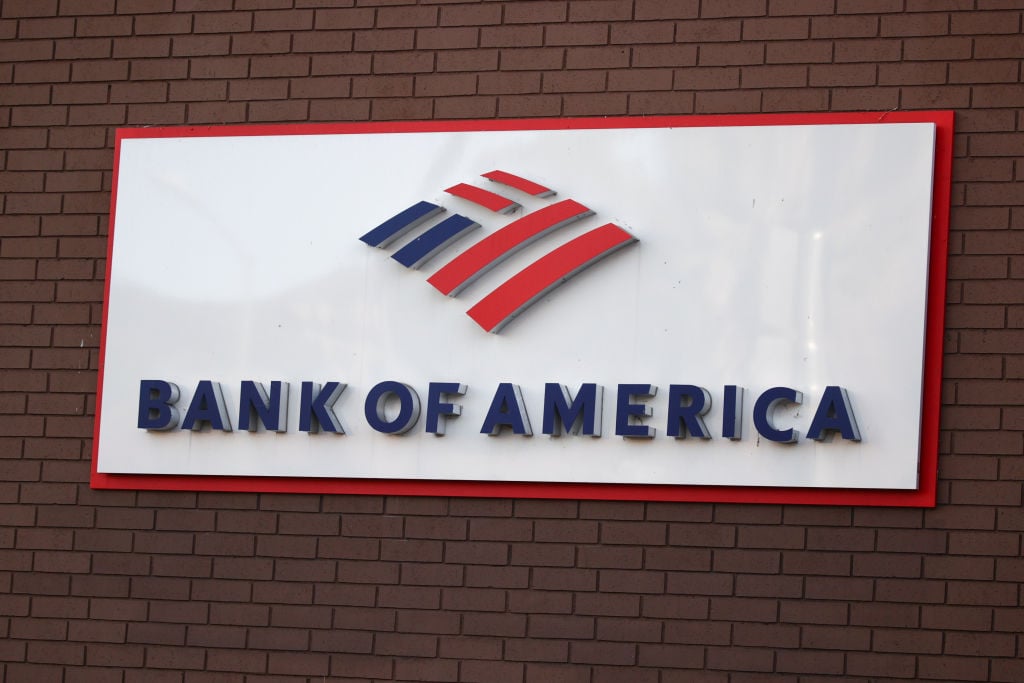Think about this.
Since 2004, Bank of America (NYSE: BAC) has paid $50 billion for Merrill Lynch, $47 billion for Fleet Boston, $35 billion for MBNA, $21 billion for LaSalle, and $4 billion for Countrywide. What does the bank have to show for all those acquisitions? A market cap of $62 billion. During the boom years, former CEO Ken Lewis was lauded as one of the best operating managers in the industry. Now, he might go down as the one of the worst dealmakers of all time.
Charlotte-based B of A's shares have fallen 53% this year, most of which came in the last two weeks. Even its preferred stock is plunging, and the cost of insuring its debt is soaring -- a sign that investors fear something truly awful could be in store. Shares now trade at 31% of book value, or 51% of tangible book.
Worries about those book-value figures have driven this plunge. Basically, investors reckon that B of A's assets are worth less than management says. At the end of last quarter, B of A had $222 billion of equity supporting $2.3 trillion of assets. That 9.8% capital cushion would normally be a healthy buffer. But some bearish analysts have crunched the numbers, and they think the bank's books are overvalued and under-reserved by between $100 billion and $200 billion. If they're right -- and, granted, they seem almost comically bearish -- B of A will have to raise a lot of capital. A Jefferies analyst this week predicted the bank needs $40 billion-$50 billion in new capital.
That's where things get nasty. Raising capital means selling stock. Now that B of A's share price has plunged, that would be devastatingly dilutive to existing investors, assuming it could even be done. The other option -- selling assets -- is mired in confusion. Investors had hoped that B of A could divest its $20 billion stake in China Construction Bank to raise cash. But on Tuesday, CCB said B of A was committed to holding at least half of that stake over the long run.
At this rate, B of A might end up like Citigroup (NYSE: C) circa 2009: A share price too low to raise enough capital, and a balance sheet stuffed with assets that either can't be sold, or which management refuses to sell. Citigroup eventually leaned on taxpayers for help. It's unclear what B of A's plan is, which is why shares have tanked in recent weeks.
For their part, B of A managers insist this is unfounded panic -- an answer they're essentially obliged to give, but one they also back up with numbers.
This is nothing like 2008, says CEO Brian Moynihan. "Simply put, we have twice the capital we did back then," he said on a recent conference call. B of A currently has twice as much capital as regulators require. New international banking standards called Basel III require large banks to hold 9.5% Tier 1 common equity, phased in between 2013 and 2019. B of A says it will already exceed 8% next year. Seven years to raise less than two percentage points of capital is hardly onerous, particularly since B of A isn't paying dividends to shareholders. As for a neverending stream of lawsuits caking the bank in uncertainty, Moynihan said he isn't going down without a fight.
Interestingly, one group that seems to agree with Moynihan is the market itself. While the market value of B of A's stock has been obliterated, the fair market value of its loans has not. It's actually fairly close to management's assumptions.
Banks value their assets using a range of internal models. Those values get reported to investors, and B of A investors now dispute them. But banks are also required to report the fair market value of their assets in the footnotes of their quarterly filings. In the most recent quarter, the difference between what B of A says its loans are worth and the fair market value of those loans was $20 billion, or about 2%. A gap that size isn't uncommon, since the market discounts loans for liquidity reasons, and because not all investors are buy-and-hold, as banks are. Wells Fargo (NYSE: WFC), regarded as one of the soundest of the large banks, reported a similar 1.5% gap last quarter. If B of A marked all of its assets to fair market prices, it would take a hit, but hardly a fatal one, and nothing near the figures some bearish analysts are throwing around.
A bank is only as strong as the confidence of its investors and customers. B of A might be a screaming buy at these prices. But will what some think is an unjustified panic turn into a self-fulfilling nightmare? No one knows. And after living through 2008, few want to find out.





